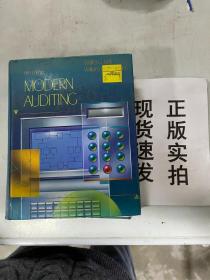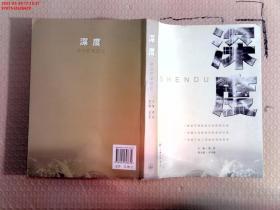
【现货速发】Modern Thermodynamics for Nonspontaneous Process in Coupled Syst
全新正版书籍,24小时发货,可开发票。
¥ 67.7 6.9折 ¥ 98 全新
库存6件
作者王季陶 著
出版社科学出版社
ISBN9787030491435
出版时间2016-07
装帧平装
开本16开
定价98元
货号24205724
上书时间2024-11-24
- 最新上架
商品详情
- 品相描述:全新
- 商品描述
-
导语摘要
There are only two fundamental opportunities ithe history ofthermodynamics.They are the establishment of classical therniodynamics for only spontaneous process isimple system othe basis of Carnot theorem and the establishment of moderthermodynamics for nonspontaneous process icoupled system othe basis ofthe thermodynamic coupling theory, since there are only two kinds of spontaneous processes and nonspontaneous processes of macroscopic changes in
Nature (excluding unknowparts of the universe). Thermodynamics is a core part of moderscience, and the second law of thermodynamics is the core of thermodynamics, which was stagnated for about 150 years iits classical stage only for spontaneous process isimple systems. The second law of thermodynamics shows the change idirectioof the macroscopic world (or called"the arrow of time" ), and is regarded as one of greatest teequations ihistory.
目录
Preface
Preface for ModerThermodynamics - A new statement of the second law, (Chin. Ed.) 2015
Chapter 1 TheoreticaIFoundatioofThermodynamics
1.1 Thermodynamics andItsApplicable Range
1.2 Two FundamentalCharacteristics ofEnergy
1.3 Fundamental Concepts of Thermodynamics
1.3.1 System and Surroundings
1.3.2 Equilibrium State and Nonequilibrium State
1.3.3 State Variables or State Functions
1.3.4 State Equation
1.3.5 Reversible, Irreversible and Quasistatic Processes
1.3.6 Spontaneous and Nonspontaneous Processes
1.4 FundamentalLaws ofThermodynamics
1.4.1 The Zeroth Law and Local Equilibrium Approach
1.4.2 The First Law ofThermodynamics
1.4.3 Carnot Theorem
1.4.4 Absolute Temperature
1.4.5 The Second Law ofThermodynamics
1.4.6 Physical Meanings ofEntropy Increase
1.5 ANew Statement ofthe Second Law ofThermodnamics
References
Chapter 2 ClassicaIThermodynamics of Spontaneous Process iSimple Systems
2.1 Equilibrium Thermodynamics (Thermodynamics ofReversible Processes)
2.2 Nonequilibrium Thermodynamics (Thermodynamics oflrreversible Processes)
2.3 CriterionofEquilibrium
2.4 CalculatioofEntropy Change
2.5 Relationship betweeGibbs Free Energy and Torp
2.6 Calculatioof Global Entropy Increase
2.7 Equilibrium Phase Diagram
References
Chapter 3 Coupling Model of Low Pressure Diamond Synthesis: A Breakthrough iThermodynamics
3.1 High Pressure Diamond Synthesis
3.2 Activated Low Pressure Diamond Synthesis
3.3 Kinetic Model of Selective Etching of SAH
3.4 Coupling ModelofLow Pressure Diamond Synthesis
3.5 Mechanism ofThermodynamic Coupling
3.6 ANew Field ofNondissipative Thermodynamics
References
Chapter 4 Nondissipative Thermodynamics of ModerThermodynamics
4.1 Nonequilibrium Phase Diagram
4.2 Thermodynamic Data ofActivated Graphite
4.2.1 Gibbs Free Energy Method
4.2.2 Equilibrium Constant Method
4.3 CalculatioofNonequilibrium Phase Diagram
4.4 T-X Nonequilibrium Phase Diagrams ofC-H System
4.5 T-p-X Nonequilibrium Phase Diagrams of C-H and C-O System
4.6 Gas CompositioNonequilibrium Phase Diagram ofC-H System
4.7 Nonequilibrium Phase Diagrams ofC-H-O System
4.8 ConfirmatioofNonequilibrium Phase Diagrams
References
Chapter 5 Dissipative Thermodynanucs of ModerThermodynamics
5.1 Calculatiofor Low Pressure Diamond iDissipative Thermodynamics
5.2 Gem-quality Carat-size Low Pressure Diamonds
5.3 ModerThermodynamics for High Speed CVD Diamond Growth
5.4 Chemiosmotic Theory ofATP Biosynthesis
5.5 Chemical Oscillation, Cyclic Reactioand Spiral Reaction
5.6 Thermodiffusion
5.7 Bernard Pattern
5.8 Development of Some Related Disciplines
……
Chapter 6 Continuum Mechanics and Kinetics Are Outside Thermodynamics
Appendix 1 A Small System ofATP Biosynthesis
Appendix 2 Nonequilibrium Phase Diagrams iModerThermodynamics
Appendix 3 A New Statement of the 2nd Law of Thermodynamics
内容摘要
There are only two fundamental opportunities ithe history ofthermodynamics.They are the establishment of classical therniodynamics for only spontaneous process isimple system othe basis of Carnot theorem and the establishment of moderthermodynamics for nonspontaneous process icoupled system othe basis ofthe thermodynamic coupling theory, since there are only two kinds of spontaneous processes and nonspontaneous processes of macroscopic changes in
Nature (excluding unknowparts of the universe). Thermodynamics is a core part of moderscience, and the second law of thermodynamics is the core of thermodynamics, which was stagnated for about 150 years iits classical stage only for spontaneous process isimple systems. The second law of thermodynamics shows the change idirectioof the macroscopic world (or called"the arrow of time" ), and is regarded as one of greatest teequations ihistory.
主编推荐
POD产品说明:
1. 本产品为按需印刷(POD)图书,实行先付款,后印刷的流程。您在页面购买且完成支付后,订单转交出版社。出版社根据您的订单采用数字印刷的方式,单独为您印制该图书,属于定制产品。
2. 按需印刷的图书装帧均为平装书(含原为精装的图书)。由于印刷工艺、彩墨的批次不同,颜色会与老版本略有差异,但通常会比老版本的颜色更准确。原书内容含彩图的,统一变成黑白图,原书含光盘的,统一无法提供光盘。
3. 按需印刷的图书制作成本高于传统的单本成本,因此售价高于原书定价。
4. 按需印刷的图书,出版社生产周期一般为15个工作日(特殊情况除外)。请您耐心等待。
5. 按需印刷的图书,属于定制产品,不可取消订单,无质量问题不支持退货。
相关推荐
-

【现货速发】Modern Auditing
九品杭州
¥ 105.00
-

【现货速发】Effective Modern C++(中文版)
全新天津
¥ 42.20
-

MODERN Essentials 精油手册 第八版正版现货速发
全新北京
¥ 298.00
-
![【现货速发】当代国际商务函电 [Modern International Business Communication]](https://www0.kfzimg.com/sw/kfz-cos/kfzimg/efddeada/6b9db7209e88b489_s.jpg)
【现货速发】当代国际商务函电 [Modern International Business Communication]
全新天津
¥ 16.10
-

现货速发 Innovation and sustnability of modern rlway 科学出版社 9787030501530
全新泰安
¥ 310.00
-

现货速发 Advancde Technologies in Modern Robotic Applications 科学出版社 9787030473523
全新泰安
¥ 93.00
-

【现货速发】深度
八五品杭州
¥ 2.00
-

【现货速发】十年
九品杭州
¥ 7.78
-

【现货速发】青春
九品杭州
¥ 1.00
-

【现货速发】 青春
九品杭州
¥ 1.00
— 没有更多了 —



![【现货速发】knative快速入门与实践 编程语言 [美] 伯尔·萨特(burr sutter),[印度] 卡梅什·桑帕斯(kamesh sampath)](https://www0.kfzimg.com/sw/kfz-cos/kfzimg/ebfeeebf/ed6c03d1e41b46ae_s.jpg)








以下为对购买帮助不大的评价